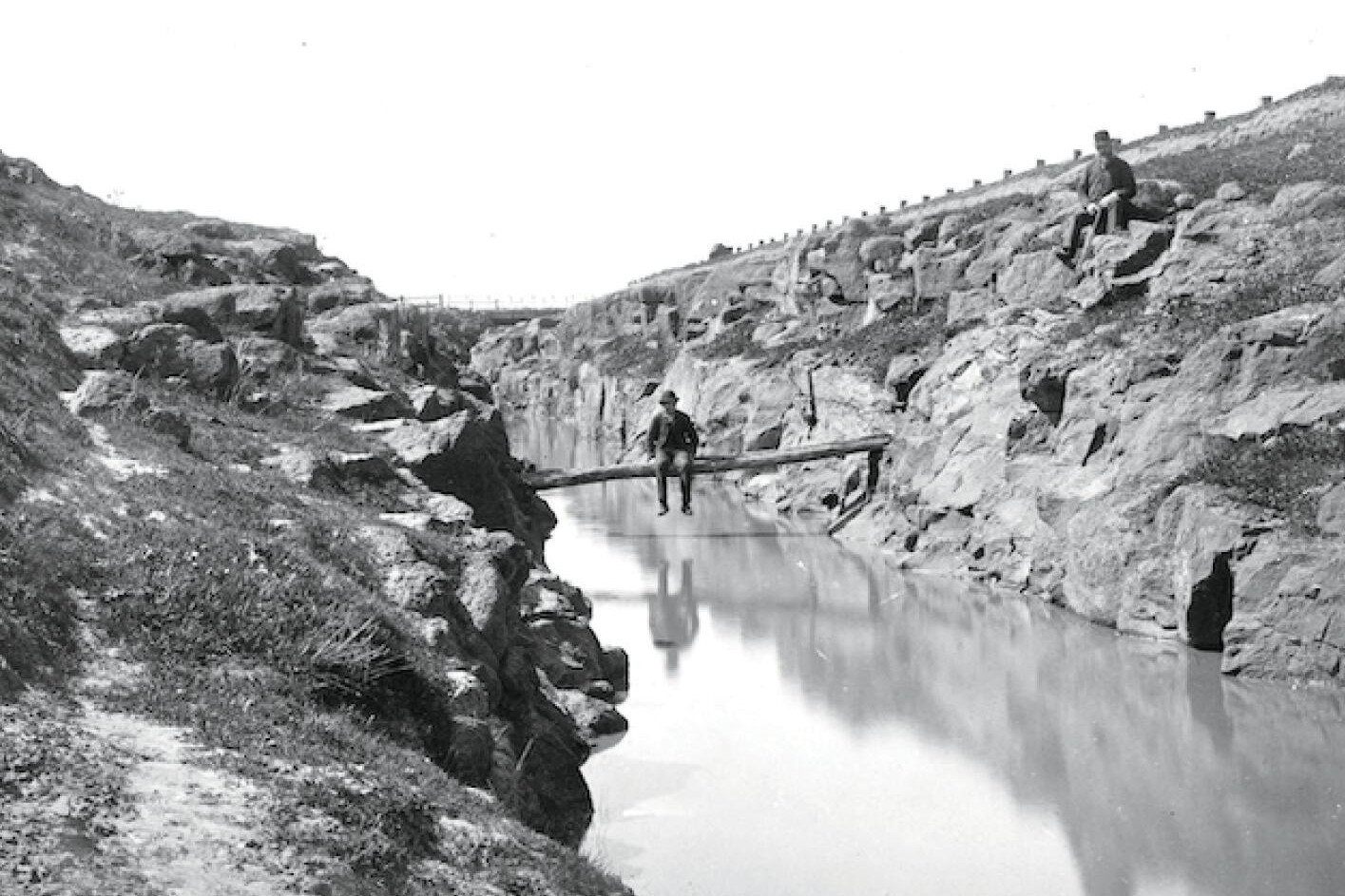General News
2 January, 2023
Stones, weirs and flumes
SUMMER READINGBy KEN ARNOLDTHERE is a nice little park at the base of the Laanecoorie weir wall, accessed by Brownbill Reserve road. The river next flows by a natural amphitheatre at Poseidon, so named after the winner of the Melbourne Cup of days...

SUMMER READING
By KEN ARNOLD
THERE is a nice little park at the base of the Laanecoorie weir wall, accessed by Brownbill Reserve road.
The river next flows by a natural amphitheatre at Poseidon, so named after the winner of the Melbourne Cup of days gone by, this being the racecourse for the Tarnagulla-Newbridge Racing Club.
On through Newbridge, the recreational reserve there being a popular camping area, on past what is known as the Brewery Hole, so named after the Albion Brewery that once stood high on the western bank.
It next flows through Bridgewater On Loddon, where water skiing, swimming and fishing are popular recreational pursuits, on under the railway line and over a weir, built on basaltic rock which runs across the river, the wall being about nine feet high and about 600 feet long, it consisting of about 700 cubic yards of concrete, cost £6,547 10s.
The keystone of the weir was layed on February 12, 1884.
It is worth the effort of driving north west down Brougham Steet, Bridgewater where you will be able to view the efforts of Messrs. Gorden and Black’s scheme in building the weir for the Loddon United Water Trust, cutting a channel to the water wheel powered flour mill and another channel six miles in length, this being in some places 20 feet deep and up to 60 feet wide and the bluestone sluice.
This was intended to send water down the latter channel, out towards the Bullock creek and Pyramid watercourses so to assist the conservation of water on the northern plains towards Kerang and the Murray River, for about four weeks each year.
It was reported that good progress was being made on the channel at the end of May 1884, there being three contractors at work. It is thought that the works finally cost £30,0000.
There is nothing of importance until we get to the Serpentine weir which is difficult to find, it being off Creek View road.
The Shire Council of Swan Hill wanted to build a wall across the river just below the Serpentine creek as early as 1881.
After much agitating the Tragowel Plains Irrigation Trust had a timber structure built by Reilly Bros., of Bagshot, at a cost of £4800, in 1887.
However, it was soon washed away. The weir is now a concrete structure.
A tangle of dead trees crowd the Loddon weir, once known as the Fernihurst weir, it being a very popular picnic area.
Water is also supplied to and from the weir by the Waranga Western channel.
The road in off Loddon Weir road is often in poor condition, however if you make the effort to go in you will be rewarded. Turn in at the Waranga Western channel bridge.
This weir was built as a result of the continual lobbying of the Loddon Valley Water League, formed by the Inglewood branch of Australian Natives Association, who had branches in most of the towns in the area.
A picnic was held at the weir in January 1929, to celebrate the opening of the weir, the extension of the Waranga Western channel to the weir and to raise money for the Inglewood hospital.
A temporary weir that had been built across the Loddon River, about 3km south east of the township of Fernihurst, so as to send water down the Kinypanial creek towards Boort, was wrecked in the May 1883 flood.
As a result “Blackfellows Creek” was excavated so as to connect the Loddon River to the Kinypanial creek anabranch.
The Loddon River then meandered on to McRavey’s weir, about seven miles upstream from Kerang.
Swan Hill Waterworks Trust had H.E. Kempson, engineer, oversee contactor Jas. Parker, build McRavey’s weir upstream from Old Kerang, the contract to start around October 1884, cost £1655/1/8.
A flume was built over Loddon River, just above McRavey’s weir, in 1889, cost £5000.
This is the area where water, which flows from the Torrumbarry weir and Kow Swamp, comes the Macorna channel and enters the Loddon river, which then flows through Kerang until it reaches the Kerang weir, near junction of Pyramid Creek and Loddon River, which can be found by turning into Weir Road off Lower Loddon Road.
Make sure you check the now historically important all timber bridge that was built in 1927.
A weir had been built at the junction of the Loddon River with Barr creek, near Murrabit West, by March 1888.
The river from then on is often a shallow, winding gutter strewn with dead trees, it passing through the saltbush and Black Box forest eventually reaching the Little Murray River near Benjeroop where it becomes a flood plain.